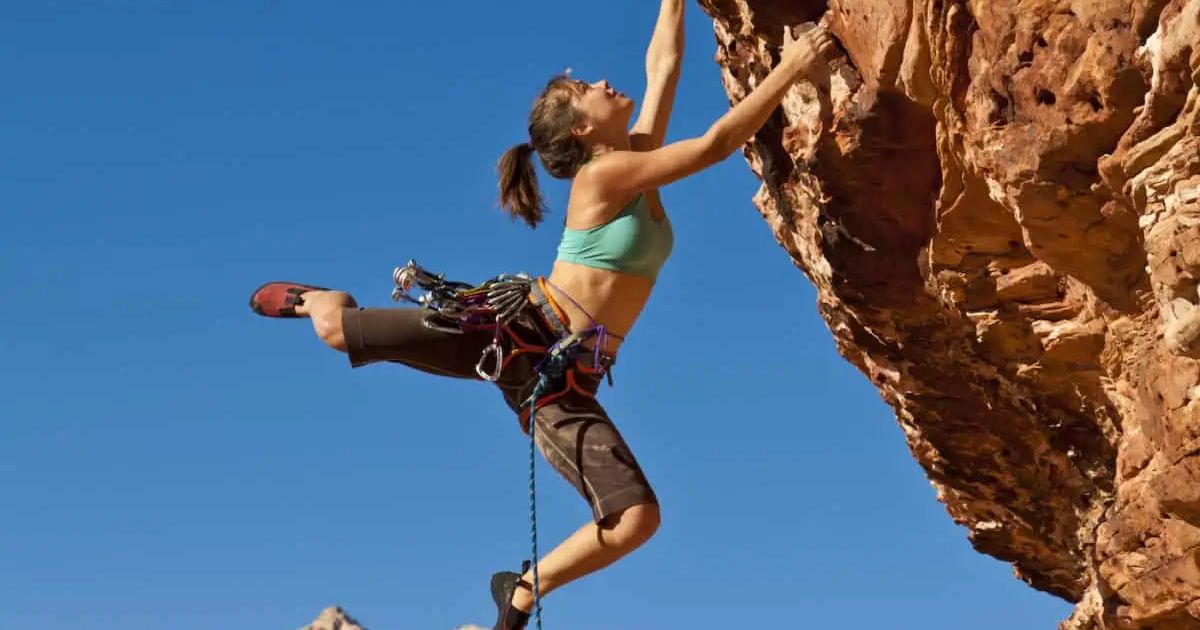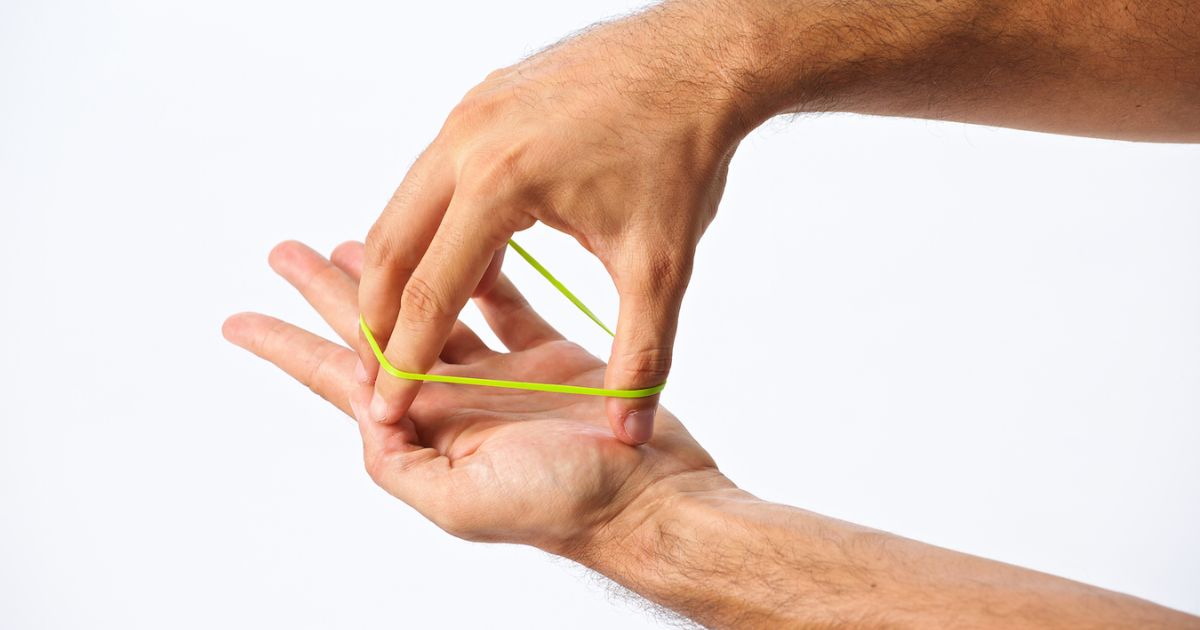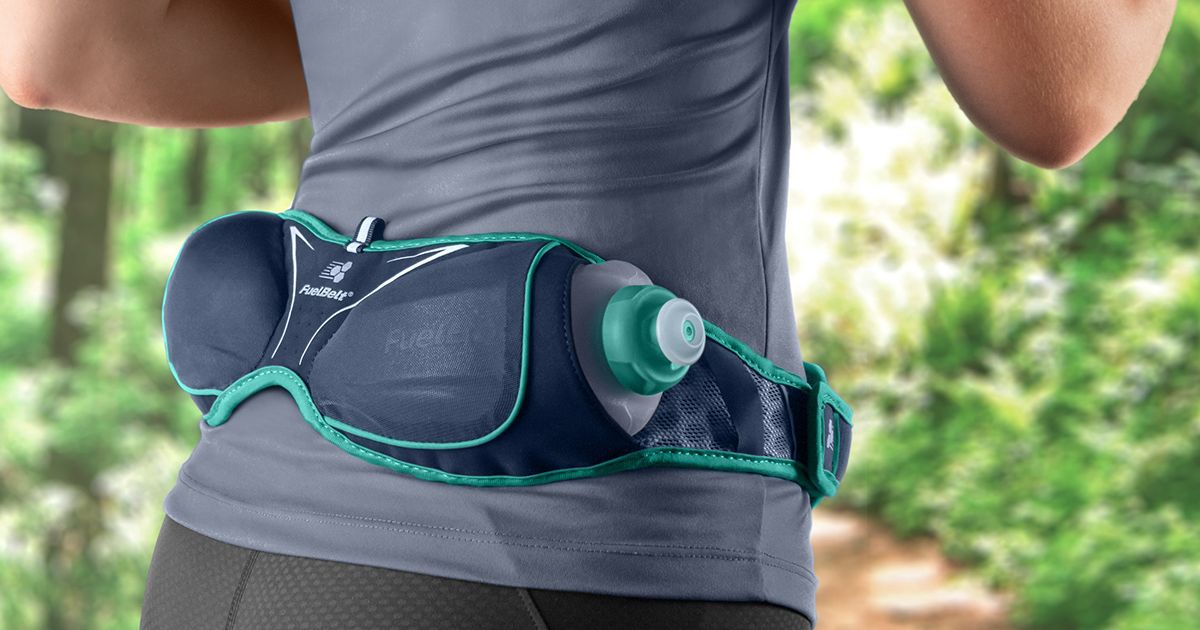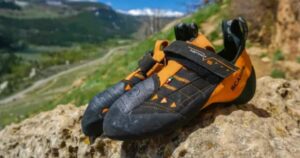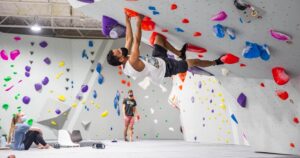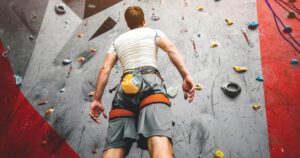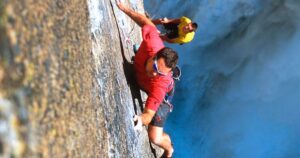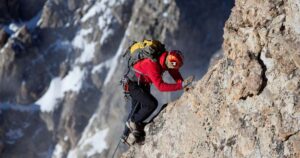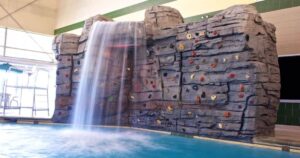“Strong hands are the foundation of successful rock climbing, enabling climbers to conquer challenging routes with confidence and precision. In this article, we will explore proven methods to increase grip strength for rock climbing. From targeted hand and finger strengthening exercises to incorporating forearm workouts and climbing-specific finger training techniques, we will provide you with the knowledge and tools necessary to enhance your grip strength. Get ready to take your climbing abilities to new heights!”
Key Takeaways
- Grip strength is crucial for control, stability, and success in rock climbing.
- Factors affecting grip strength include muscle strength, flexibility, forearm and wrist stability, technique, and overall fitness level.
- Exercises such as dead hangs, static holds, fingerboard training, and campus board exercises can improve grip strength.
- Consuming a balanced diet with adequate protein, vitamins, and minerals, as well as proper hydration and considering supplements like magnesium, can support optimal grip strength.
Hand and Finger Strengthening Exercises
Hand and finger strengthening exercises are crucial for improving grip strength in rock climbing. Proper conditioning of the wrist, hand, and finger muscles is essential to enhance performance, reduce the risk of injury, and understand that rock climbing can be dangerous. Wrist exercises for rock climbing focus on increasing the flexibility and strength of the wrists, allowing for better control and stability while climbing.
These exercises include wrist curls, wrist extensions, and wrist rotations. Stretching techniques for hand and finger muscles are also vital to maintain flexibility and prevent muscle tightness. Finger extensions, finger curls, and finger stretches help to improve finger strength and dexterity necessary for gripping holds. Incorporating these exercises and stretches into a regular training routine can significantly enhance grip strength and overall climbing performance.
Grip Training Tools and Equipment
To further enhance grip strength for rock climbing, it is important to explore various grip training tools and equipment. These tools not only provide a challenging workout but also offer a sense of belonging to the rock climbing community. Here are some grip training exercises for beginners and tips on choosing the right equipment:
- Grip training exercises for beginners:
- Finger curls: Hold a dumbbell and curl your fingers around it, focusing on squeezing your hand.
- Plate pinches: Pinch weight plates together using your fingertips, gradually increasing the weight.
- Hand grippers: Squeeze hand grippers to strengthen your grip and forearm muscles.
- Choosing the right grip training equipment:
- Fingerboards: These hanging boards have different types of holds to mimic climbing grips.
- Grip balls: These small, portable balls can be squeezed to improve grip strength.
- Grip trainers: These devices target specific grip muscles and offer adjustable resistance levels.
Incorporating Forearm Workouts
When incorporating forearm workouts to increase grip strength for rock climbing, it is essential to focus on targeted exercises that specifically engage the muscles in the forearm. Forearm exercises play a crucial role in enhancing grip strength and coordination for rock climbers. These exercises help to develop the muscles responsible for gripping and stabilizing during climbs, improving overall performance and reducing the risk of injury.
By targeting the forearms, climbers can enhance their ability to hold onto small edges, crimps, and slopers. Incorporating exercises such as wrist curls, reverse wrist curls, forearm pronation and supination, and finger extensions can effectively strengthen the forearms and improve grip coordination. It is important to note that consistency and proper form are key when performing these exercises to maximize their benefits.
Climbing-Specific Finger Training Methods
To further enhance grip strength and coordination for rock climbing, climbers can incorporate climbing-specific finger training methods that target the muscles responsible for gripping and stabilizing during climbs. These methods not only help climbers develop stronger fingers but also aid in finger injury prevention and recovery. Here are two effective climbing-specific finger-training methods:
- Hang board Training:
- Utilize a hang board, a training tool designed specifically for climbers, to perform various finger-strengthening exercises.
- Hang onto different-sized holds, incorporating different grips and positions, to simulate the finger demands encountered during climbing.
- Campus Board Training:
- The campus board is a vertically oriented training tool consisting of rungs or ladder-like holds.
- Utilize explosive movements to move from one rung to another, focusing on finger power and contact strength.
Incorporating these climbing-specific finger training methods into a regular training routine can significantly improve grip strength, finger endurance, and overall climbing performance.
Grip Strength Training for Endurance
For optimal rock climbing performance, climbers should incorporate grip strength training exercises that focus on enhancing endurance. Endurance is crucial in rock climbing as it allows climbers to sustain their grip strength over an extended period of time, reducing the risk of fatigue and potential injury. To improve grip strength endurance, climbers can utilize various techniques such as repeaters and hang boarding.
Repeater exercises involve performing multiple sets of high repetitions with short rest intervals, while hang boarding involves hanging from a small edge for an extended duration. These exercises target the muscles and tendons in the hands and forearms, increasing their ability to withstand prolonged stress. By incorporating grip strength training for endurance, climbers can enhance their performance on longer climbs and reduce the likelihood of injury. Now, let’s explore the importance of cross-training for overall upper-body strength.
Cross-Training for Overall Upper Body Strength
To enhance overall upper body strength for rock climbing, incorporating cross-training exercises is essential. Cross-training involves engaging in a variety of exercises that target different muscle groups and movement patterns, helping to develop a well-rounded physique. By participating in cross-training, climbers can prevent overuse injuries and improve their overall performance on the wall. Here are some effective warm-up techniques and injury-prevention strategies to consider:
- Dynamic stretching: Incorporate dynamic stretches that target the upper body, such as arm circles and shoulder rotations, to increase blood flow and range of motion.
- Resistance training: Use resistance bands or weights to strengthen the muscles in the arms, shoulders, and back, which are crucial for rock climbing.
- Bodyweight exercises: Perform exercises like push-ups, pull-ups, and dips to build functional strength and endurance.
- Yoga or Pilates: These activities improve flexibility, core stability, and body awareness, which are all important for rock climbing.
Proper Nutrition for Optimal Grip Strength
Proper nutrition plays a crucial role in optimizing grip strength for rock climbing. Essential nutrients, such as protein, carbohydrates, and fats, provide the necessary fuel for muscle function and recovery. Additionally, adequate hydration is essential for maintaining optimal grip strength, as dehydration can lead to decreased muscle performance and coordination. By focusing on a well-balanced diet and staying properly hydrated, climbers can support their grip strength and overall performance on the wall.
Essential Nutrients for Grip
Adequately nourishing your body with essential nutrients is crucial for maintaining optimal grip strength in rock climbing. To enhance your grip, here are some supplement recommendations and dietary tips:
- Supplement recommendations:
- Protein: Consuming adequate amounts of protein supports muscle growth and repair, which is essential for grip strength.
- Omega-3 fatty acids: These healthy fats reduce inflammation and improve joint health, promoting better grip strength.
- Dietary tips:
- Hydration: Proper hydration is key for optimal muscle function and grip strength.
- Micronutrients: Ensure you’re getting enough vitamins and minerals through a balanced diet to support muscle and bone health.
Hydration’s Impact on Grip
Maintaining optimal grip strength in rock climbing is closely tied to proper hydration, as it plays a crucial role in muscle function and performance. Proper hydration not only helps to prevent muscle cramps and fatigue but also improves overall endurance and reduces the risk of injury. When climbers are dehydrated, their muscles can become weaker, affecting their ability to maintain a strong grip on the rock surface.
To highlight the benefits of proper hydration for grip strength, let’s look at the following table:
| Benefits of Proper Hydration |
|---|
| Improved muscle function |
| Enhanced endurance |
| Reduced risk of muscle cramps |
| Increased grip strength |
| Decreased muscle fatigue |
To improve grip strength through hydration, climbers should follow these techniques:
- Drink plenty of water before, during, and after climbing sessions to stay adequately hydrated.
- Consume sports drinks or electrolyte-rich beverages to replenish essential minerals lost through sweating.
- Eat water-rich foods like fruits and vegetables to supplement hydration.
- Avoid excessive caffeine and alcohol intake, as they can lead to dehydration.
Frequently Asked Questions
How Long Does It Typically Take to See Improvements in Grip Strength After Starting Hand and Finger Strengthening Exercises?
Improvements in grip strength after starting hand and finger strengthening exercises can vary depending on factors such as individual fitness level, training frequency, and intensity. Consistent training and proper technique are essential for optimal results.
Are There Any Grip Training Tools or Equipment That Are Specifically Designed for Rock Climbers?
There are various grip training tools and equipment specifically designed for rock climbers, such as fingerboards, hangboards, and grip trainers. These tools help climbers target and strengthen their finger muscles, enhancing grip strength for improved performance.
Can Incorporating Forearm Workouts Into My Training Routine Help Improve My Grip Strength for Rock Climbing?
Incorporating forearm workouts into a training routine can improve grip strength for rock climbing. This not only enhances performance but also reduces the risk of injuries and offers overall fitness benefits.
Are There Any Specific Finger Training Methods That Are Tailored to Rock Climbing?
Finger-strengthening exercises for musicians and grip-strength training for other sports have been found to enhance performance. These specific training methods tailored to rock climbing focus on improving finger strength and endurance, crucial for successful rock climbing.
Is Grip Strength Training for Endurance Different From Regular Grip Strength Training, and if So, How?
Grip strength training techniques can vary depending on the desired outcome, such as endurance or regular strength. Endurance grip training typically involves longer-duration exercises, while regular grip training focuses on increasing overall strength. The benefits of grip strength extend beyond rock climbing, as it is crucial for various sports and activities that require a firm grasp and control.
Conclusion
In conclusion, enhancing grip strength is crucial for rock climbers to improve their performance and prevent injuries. By incorporating hand and finger strengthening exercises, utilizing grip training tools and equipment, incorporating forearm workouts, and implementing climbing-specific finger training methods, climbers can effectively increase their grip strength. Cross-training for overall upper body strength and maintaining proper nutrition are also essential for optimal grip strength. So, don’t let weak grip hold you back from conquering new heights in your climbing journey.
